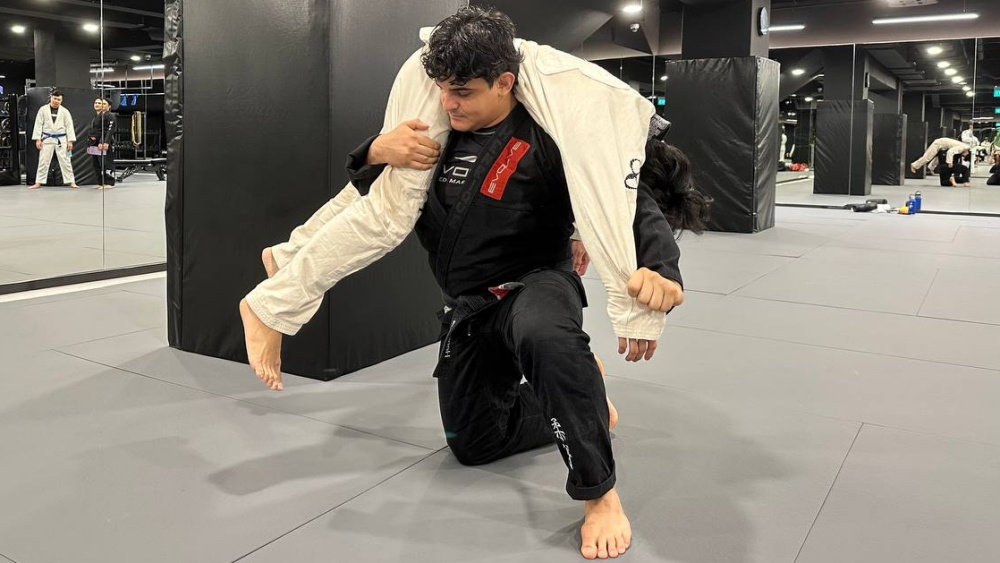While takedowns are an incredibly important part of Brazilian Jiu-Jitsu (BJJ), for far too long they have been an afterthought for the majority of us in the BJJ community. As BJJ is a martial art that focuses on the intricacies of grappling on the ground, it is natural that the stand-up aspects of grappling aren’t given as much emphasis, leading to an insignificant amount of time practicing them. Just because the ground-based aspects of BJJ are the main focus, that doesn’t mean we should neglect our takedowns.
If you feel like your takedowns are a disproportionally weak area of your game, yet you are unsure of how to remedy this, you are not alone; there are thousands of other BJJ practitioners who are feeling the same way as you. By employing these three training methods, you will begin to develop perfect takedowns in no time!
1) Practice the Movements Without a Partner
https://www.youtube.com/watch?v=Y2tumAvBHtg
While this method of practice isn’t feasible for the majority of the moves in BJJ (as they usually rely on a partner), takedowns are unique in that you can practice them on your own! In fact, it is beneficial to learn the proper mechanics of a takedown without a training partner so that you can make sure you are getting the movements correctly.
Let’s say you have decided you want to work on your Double Leg takedowns, one of the most commonly utilized in all forms of martial arts competition. Start at one end of the mat, making sure there is plenty of space in front of you. Change your level by squatting down, making sure you are keeping your back straight, and that you are not bending over at your hips. Take your “penetration step” with your front foot; this would bring you into the appropriate range of your imaginary opponent. Now, drop the knee of your front leg to the mat, as your trail leg swings around your body and lands with its foot on the floor, in front of your other knee. Now, pop up to your feet as if you were coming up to finish the takedown.

While this example pertains to the Double Leg Takedown, this style of solo-drilling is a great way to develop all sorts of takedowns, including Single Legs, High Crotches, Foot Sweeps, and Judo Throws!
2) Warm Up with Takedowns
The main reason the martial arts community believes BJJ practitioners have shoddy takedowns is because the majority of BJJ takes place on the ground, so substantially less time is spent practicing grappling on the feet than the other arts. One way to remedy this problem is to integrate takedowns into your warmups, just as you likely do with break falls, technical stand-ups, shrimping, and other BJJ specific movements. At the start of your training session, grab a training partner who is also looking to improve his takedowns and put the timer on for five minutes. At a high, yet controlled, pace, you and your partner should execute takedowns on each other in a controlled, safe manner with minimal resistance. Your takedowns should be executed at about 70% speed to make sure your technique is a priority, but the pace between reps should be high to get a good warmup. As soon as a takedown is executed, pop back up to your feet for your partner’s turn!

By integrating takedowns into your warmups in this manner, you will have greatly increased the number of reps that you can get through every week, which will directly improve your takedown repertoire! Above is a short clip of a class integrating takedowns into their warmups; they are not finishing the takedowns, but we would certainly suggest you do to make sure you practice the technique fully!
3) Positional Training
Now that you have developed your takedown techniques through your solo drilling and integrating takedowns into your warmups, you are more than ready to begin to practice in a live situation against a resisting opponent.
While it is always good to make sure you are starting all of your training rolls from your feet, it can be difficult to get a decent amount of takedown practice using this method as practitioners will pull guard, eager to get to work on whatever fancy guard they are trying to develop. To make sure we are getting the time on our feet to develop solid takedown skills, it is important to integrate takedown-specific training into our weekly practice.
At least once a week, grab your training partner and designate a round or two where you will both be working for the takedown; no guard pulling, and return to your feet as soon as a takedown is achieved. Just as we use positional training to develop the skills of our guard, mount, back control, and every other position in BJJ, takedown-specific training is necessary if you’d like to develop strong stand up grappling skills.
The important thing to remember when you start these three steps to develop your takedowns is that the stand-up aspects of BJJ are the same as the ground-based aspects. Proper technique and timing are still necessary. Even some of the more seasoned BJJ practitioners will be scared by takedowns as they feel they are entirely different. By remembering that they are just another aspect of the martial art, and using the three training methods listed above, you will be on your way to having a full arsenal of effective takedowns!
If you found this article interesting, here are some others that you may enjoy:
Here’s How To Find The Perfect BJJ Gym
6 Common Mistakes Beginners Make Trying To Pass The Guard In BJJ

















